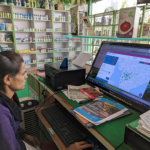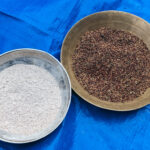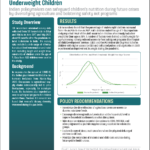Tag: Markets & Value Chains

How Many FPOs Are There in India? How We Counted the Number of Farmer Producer Organizations
Farmer producer organizations (FPOs) have the potential to significantly aid smallholder agricultural development through the power of aggregation. In India, where most farms are smaller than a hectare, well-functioning FPOs can boost farm incomes through better market linkages and increased…

Essays in Agriculture Economics, Climate Change, and Nutrition
Abstract The dissertation consists of three essays in the field of agriculture economics, climate change, and nutrition. I have structured it as three chapters, namely ‘Fertilization Impact Of Atmospheric Carbon Dioxide On Agricultural Yield’, ‘Are Production And Consumption Decisions Independent? Identifying Separability In Indian Agriculture’,...

The State of Food Loss Along Perishable Vegetable Supply Chains
Abstract This research was done in the context of tomato supply chains in Chittoor District, Andhra Pradesh and Hyderabad city, Telangana. The study aims were (1) to examine the extent, stages and determinants of food loss along tomato supply chains from farmer to retail; (2)...

Millets Are Key to Making the PDS Environmentally Friendly
In 2021–22, India spent US$17.4 billion on the Public Distribution System, or PDS. For a program that ensures food security for over 800 million people, that seems like a good bargain. However, new research on the hidden costs of the…

Reducing the True Cost of Food-Based Safety Nets: Evidence from India’s Subsidized Food Program
Abstract Public procurement of food plays a pivotal role in determining the production and consumption of various food items. This is particularly true for staple grains in countries such as India, where the government procures over 40 percent of rice and wheat. This grain is...

Op-Ed Makes the Case for Millets in the PDS
The Indian government can help to ensure that nutritious millets are accessible for all Indians by promoting their inclusion in the Public Distribution System (PDS), researchers from the Tata-Cornell Institute for Agriculture and Nutrition (TCI) argue in a new op-ed…

Indian Millet Cultivation Plagued by Low Yields, Prices, and Profits
Millets contribute to achieving six of the seventeen Sustainable Development Goals for 2030: zero hunger, good health and well-being, decent work and economic growth, responsible consumption and production, climate change, and life on land. In India, the gradual disappearance of…

Building India’s First FPO Data Dashboard
“How many FPOs are there in India?” This seemingly simple question marked the beginning of an unexpected challenge when I began working on the Tata-Cornell Institute’s project on FPO-Led Small Farm Market Access Models in 2019.
Farmer producer organizations (FPOs)…

Money Matters: Understanding the Complexities of India’s Digital Payment Journey
Digital payment platforms have emerged as an integral component of modern India’s financial landscape. These platforms offer convenient and quick ways for individuals and businesses to complete cash-free transactions. From the user-friendly interfaces of mobile wallets to the innovative simplicity…

Pandemic-Era Disruptions Linked to 14% Increase in Underweight Children
This policy brief presents the findings of a TCI study that examined the impact of the COVID-19 pandemic on children’s nutrition in India. Using TARINA survey data, researchers found a 14% increase in underweight children after pandemic-related lockdowns. Based on these results, TCI recommends that...

